Seasonal eating finds garden vegetables at their best. Freshly harvested produce is at its peak for flavor and nutrient value. Balsamic Glazed Root Vegetables are no exception.
The Autumn Table
Prepping Balsamic Glazed Root Vegetables for Roasting
For the recipe I am sharing today, I used two very hefty red beets, 3 large carrots and a large onion, but you can use any root or cruciferous vegetable you would like. I actually roasted some regular and sweet potatoes on the same day, but prepped them separately, leaving out the glaze. First, I set the oven at 375 and washed and chopped the vegetables. I’d say my pieces were roughly 3/4″ but not precise. I peeled the carrots and cut them into coins. Next, I cut the ends off an onion and peeled and quartered it.
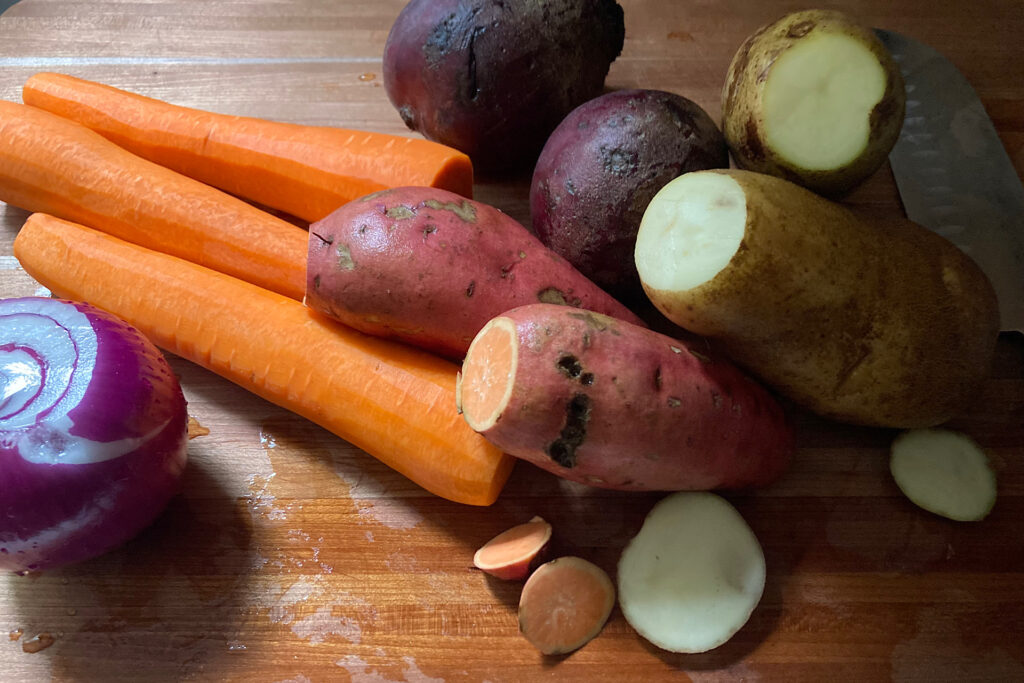
It’s best to separate the larger onion quarters in half with your fingers so they are not too big and will cook evenly. I also cut the ends off the beets and rough-chopped them. When chopping the beets, I cut them in half first and rested them on their flat side so they were stable for slicing. Same with quartering the onions. Cut them in half first, then you have a flat surface that is safer to work with. Chop the sweet and regular potatoes the same way – slice them in half – then cut to roughly 3/4″ pieces. It’s worth mentioning here, if you are using a wooden cutting board, the beets may stain it. My wooden board is handmade and I chose to protect it by using a plastic board to prep the beets.
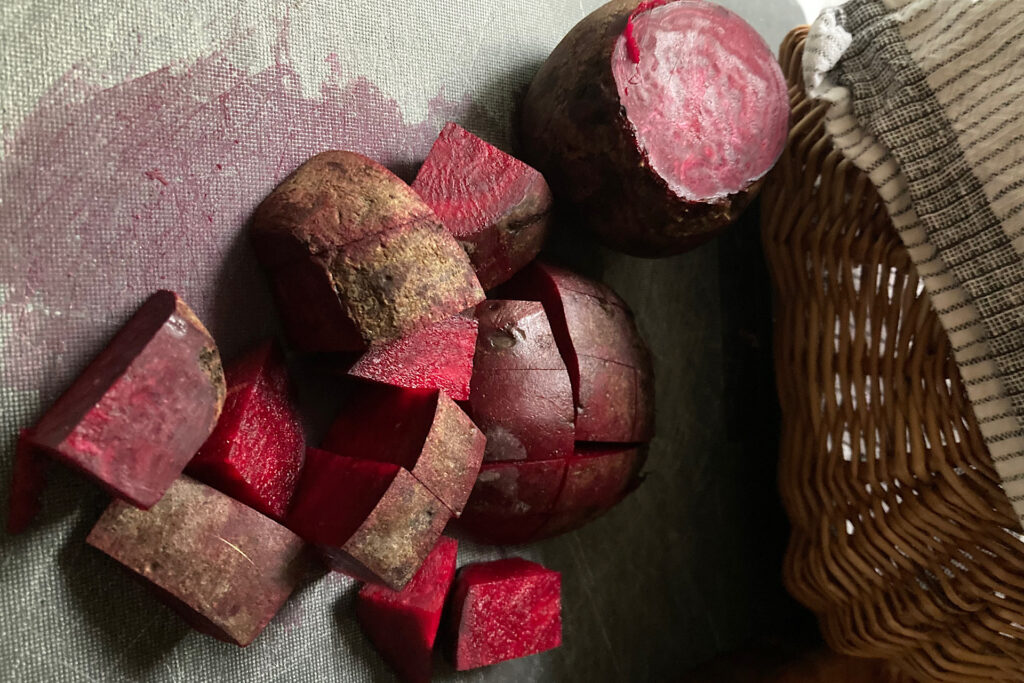
Seasoning and Glazing
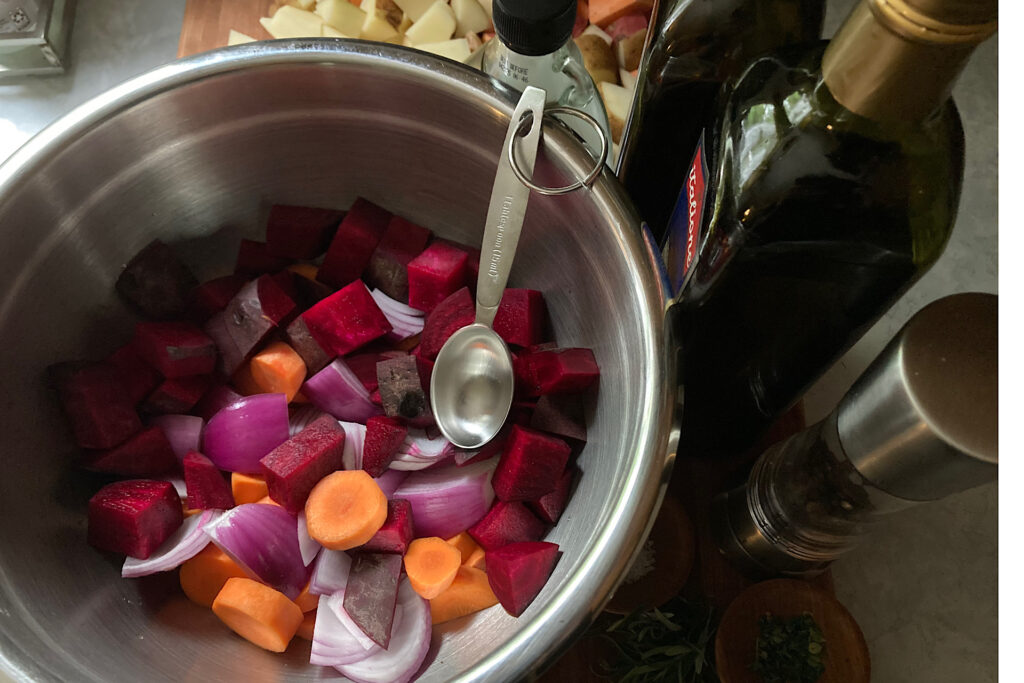
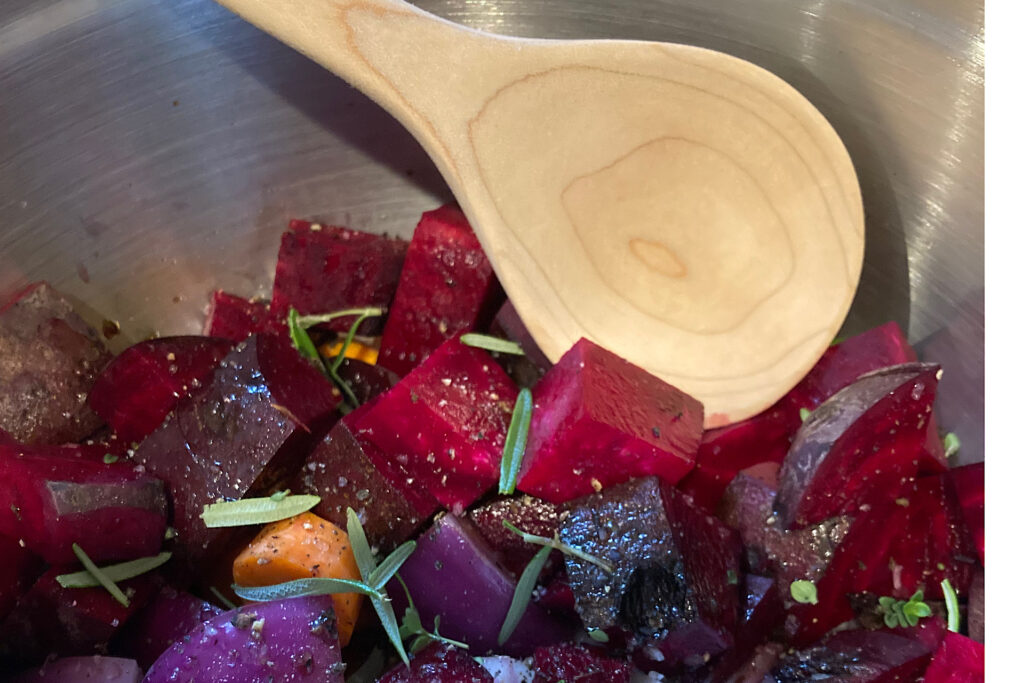
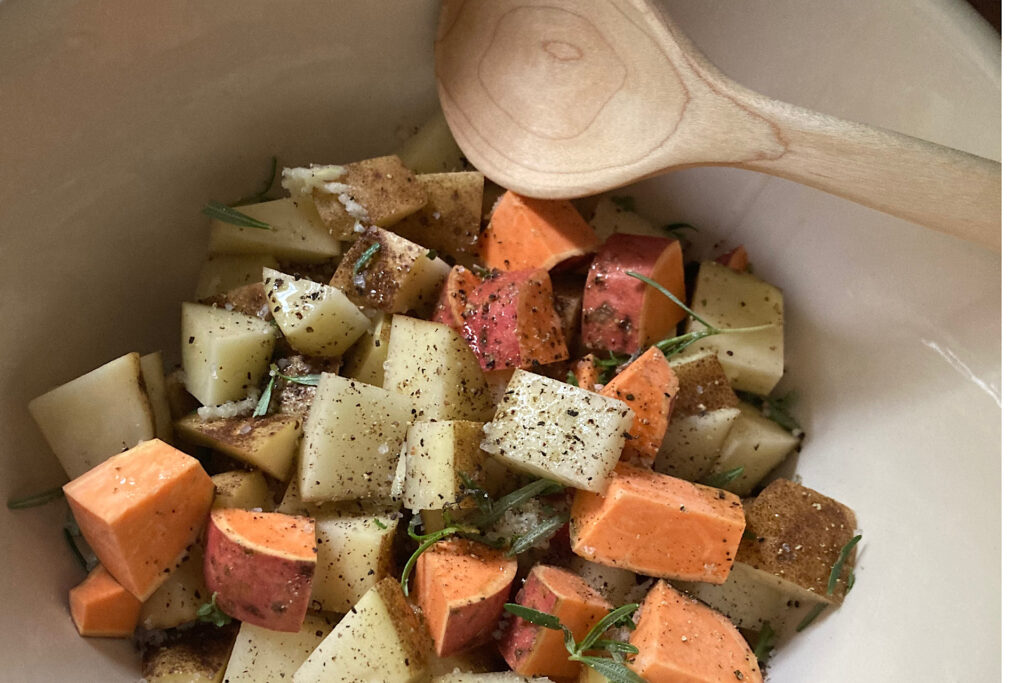
Roasting and Caramelizing Balsamic Glazed Root Vegetables
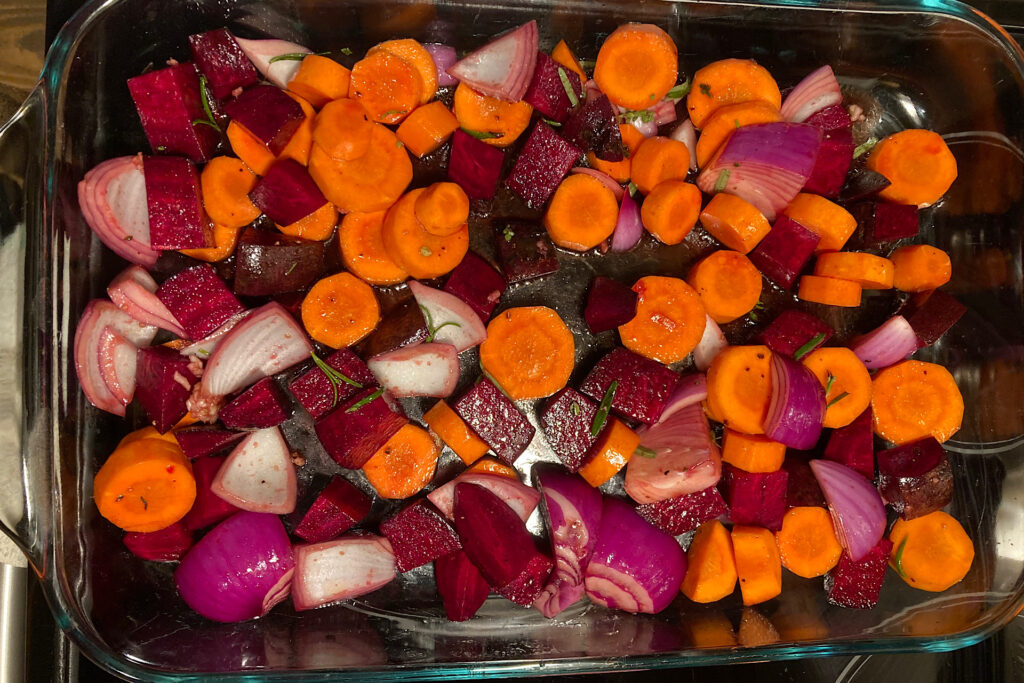
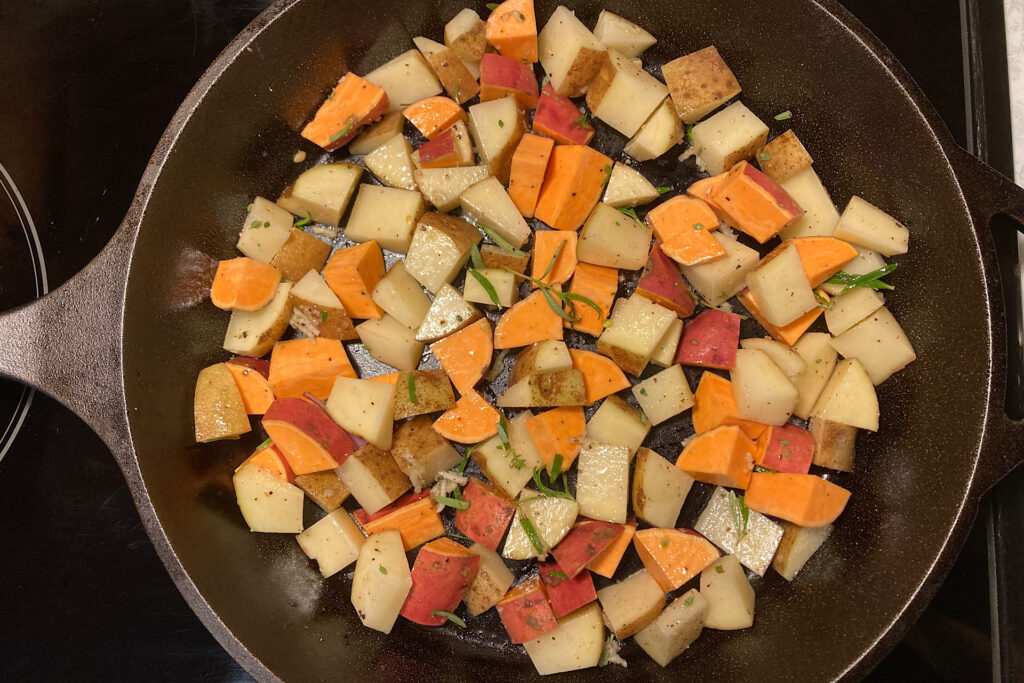
Serve and Savor
When your vegetables are done roasting, they are ready to serve. Leave them in the oven to warm while prepping other items on the menu. Again, they look beautiful in an autumn toned serving vessel. Garnish with a little fresh thyme and they are the perfect seasonal dish!
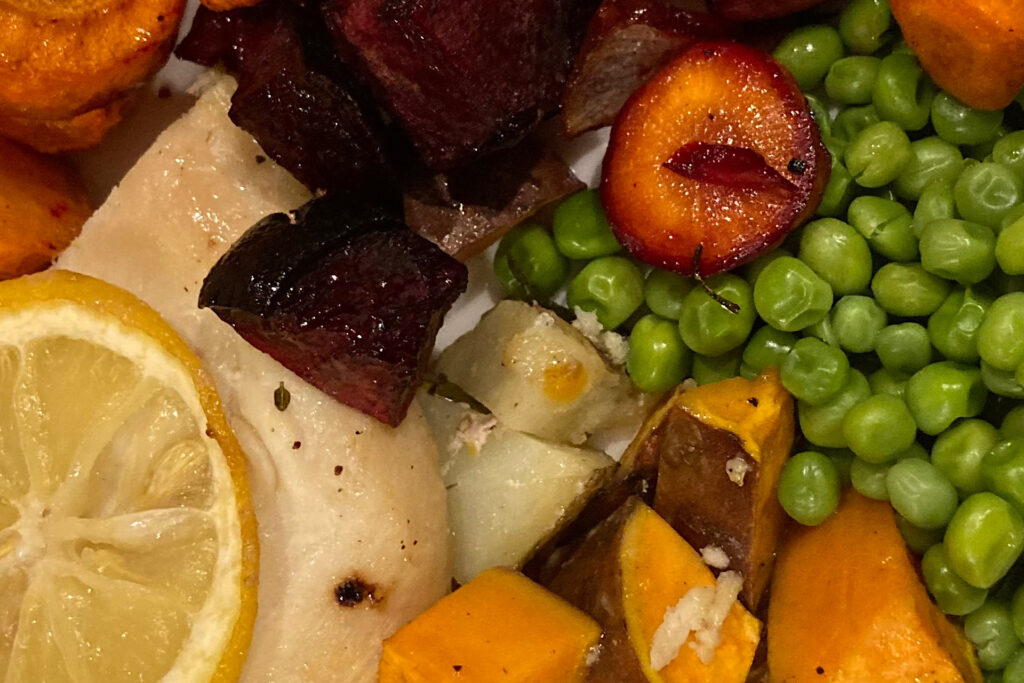
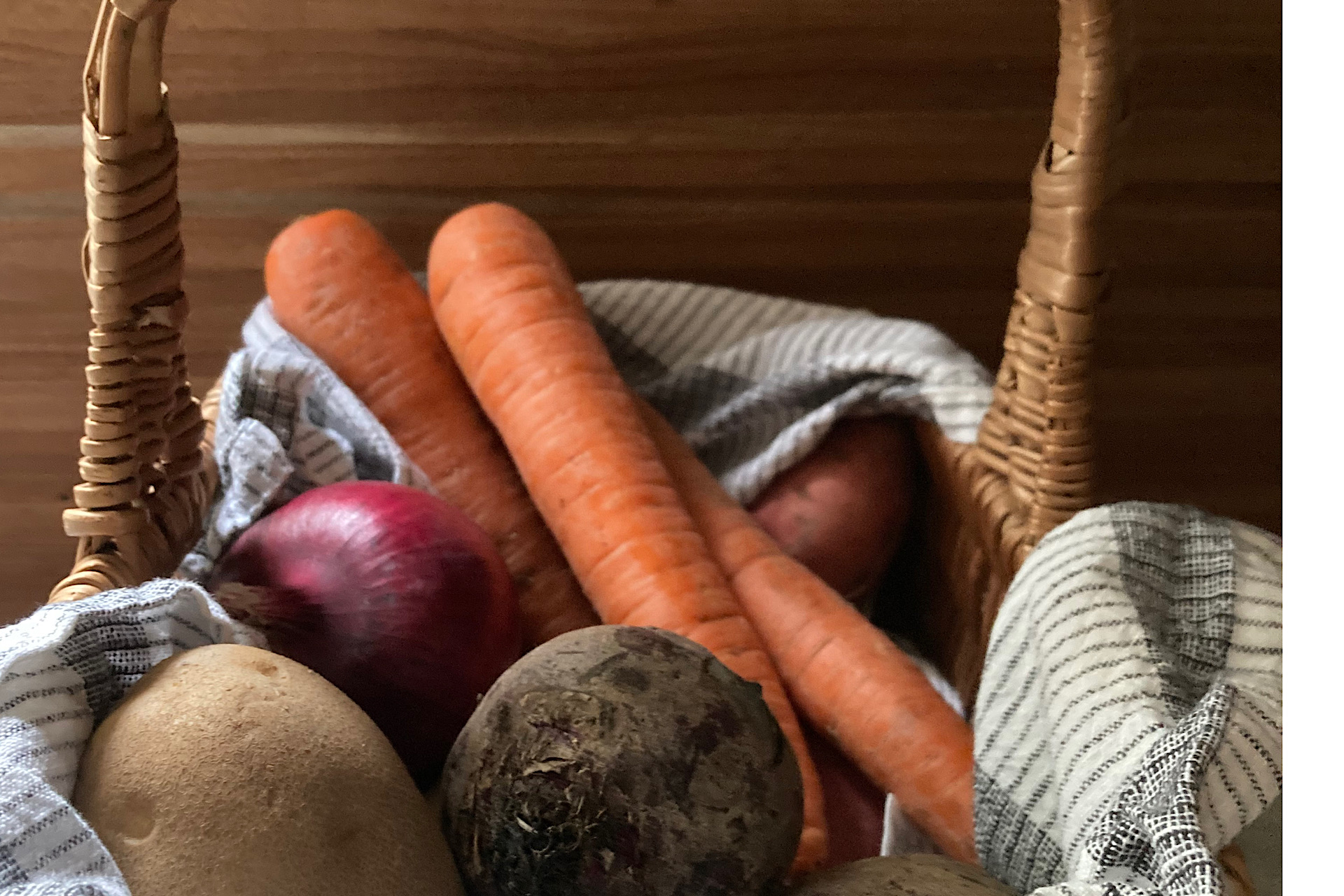
What did you serve them with??
Hi there! I served them with lemon roasted chicken and green peas!